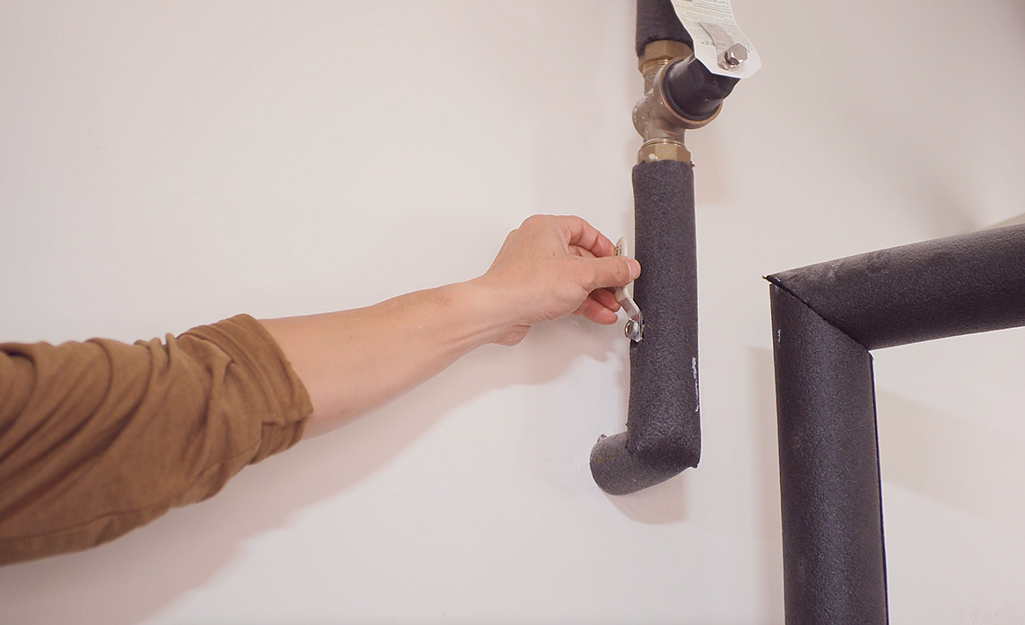Everyone will have their private theory on the subject of 4 Common Reasons for a Leaky Faucet.

Dripping faucets may feel like a small aggravation, yet their influence surpasses just the nuisance of the noise. From wasting water to incurring unneeded economic expenses and health risks, overlooking a trickling faucet can lead to various effects. In this post, we'll delve into why it's crucial to resolve this common family issue without delay and successfully.
Wastage of Water
Environmental Influence
Leaking taps contribute dramatically to water wastage. According to the Epa (EPA), a solitary faucet leaking at one drip per secondly can waste more than 3,000 gallons of water annually. This not just stress water resources but also affects ecological communities and wildlife dependent on them.
Financial Prices
Enhanced Water Bills
Past the environmental effect, leaking faucets can blow up water expenses substantially. The collected waste over time equates right into higher energy expenses, which might have been avoided with prompt repairs.
Prospective Home Damages
Furthermore, extended trickling can result in harm to components and surface areas surrounding the faucet. Water build-up can create discoloration, deterioration, and also structural problems if left neglected, resulting in extra fixing expenses.
Health and wellness Concerns
Mold and Mildew Development
The consistent visibility of wetness from a trickling tap produces an ideal atmosphere for mold and mildew and mold development. These fungis not only jeopardize indoor air high quality yet additionally pose health dangers, especially for people with respiratory system problems or allergies.
Waterborne Diseases
Stagnant water in dripping taps can come to be a breeding place for microorganisms and various other microorganisms, boosting the danger of waterborne illness. Pollutants such as Legionella bacteria thrive in stationary water, possibly resulting in serious illnesses when consumed or inhaled.
Do it yourself vs. Expert Repair work
Advantages and disadvantages of DIY Fixing
While some may try to take care of a dripping faucet themselves, do it yourself repair work feature their own collection of difficulties. Without appropriate expertise and tools, DIY attempts can intensify the problem or cause insufficient fixings, lengthening the trouble.
Advantages of Working With a Specialist Plumber
Working with a specialist plumber makes certain that the underlying source of the trickling faucet is resolved properly. Plumbers have the expertise and equipment to diagnose and repair tap issues efficiently, conserving time and minimizing the danger of further damages.
Step-by-Step Guide to Taking Care Of a Dripping Tap
Devices Called for
Prior to trying to take care of a leaking faucet, collect the necessary devices, consisting of a flexible wrench, screwdrivers, substitute parts (such as washing machines or cartridges), and plumber's tape.
Typical Faucet Issues and Their Solutions
Identify the kind of faucet and the certain problem creating the drip. Typical troubles include damaged washers, corroded valve seats, or faulty O-rings. Refer to supplier instructions or on-line tutorials for detailed assistance on fixings.
Preventive Measures
Routine Upkeep Tips
To stop dripping taps, execute routine maintenance such as cleaning up aerators, checking for leakages, and changing damaged components without delay. Additionally, consider installing water-saving devices or upgrading to more efficient components.
Relevance of Prompt Services
Dealing with leaking taps as quickly as they're noticed avoids additional water wastefulness and potential damage, ultimately saving both water and money over time.
Effect On Residential Or Commercial Property Value
Understanding of Well-Maintained Home
Preserving a property in good condition, consisting of resolving upkeep concerns like leaking faucets, enhances its regarded value and value amongst prospective purchasers or tenants.
Impact on Resale Value
Features with well-kept plumbing fixtures, consisting of faucets, command higher resale worths in the realty market. Attending to leaking faucets can add to a favorable impression throughout home assessments and arrangements.
Ecological Responsibility
Individual Payment to Preservation
Taking obligation for fixing leaking taps lines up with wider initiatives toward water preservation and ecological sustainability. Every individual's actions jointly make a considerable effect on preserving valuable resources.
Lasting Living Practices
By prioritizing timely repair work and adopting water-saving habits, people add to lasting living techniques that profit both existing and future generations.
Verdict
Addressing a dripping faucet surpasses plain comfort; it's a vital step toward preserving water, minimizing monetary costs, and guarding health and wellness and building. Whether with DIY fixings or expert aid, taking action to fix dripping taps is a small yet impactful means to promote accountable stewardship of resources and contribute to a much healthier, much more lasting future.
How to Fix a Leaky Faucet: Step-by-Step Repair Guide
A leaky faucet may seem like a simple annoyance, but if it's not fixed promptly, that leak could cost hundreds to potentially thousands. From water damage to mold, mildew, and high water bills, even a tiny leak can be catastrophic if left unattended. Damage like this can even affect the overall value of your home, so it's important to take the right approach for leaky faucet repair. You may need the help of a plumber in some cases, but we've got a few tips you can try on how to fix a leaky faucet before calling the pros.
Four Faucet Types
When you're learning how to fix a leaky faucet, the first step is knowing what kind of faucet you're working with! There are four common types.
Cartridge Faucets
Cartridge faucets come in one- or two-handled varieties. In one-handled cartridge faucets, hot and cold water combines in a single cartridge. In the two-handled versions, hot and cold water are controlled separately and mixed in the faucet.
Ball Faucets
Ball faucets have a single lever you push up and down to adjust the pressure and rotate to change the temperature. A slotted metal ball controls the amount of water allowed into the spout.
Compression Washer Faucets
They're the oldest type of faucet, but they're still used in many homes — especially older ones. Compression faucets have two separate handles that, when turned, raise or lower the washer that seals a water valve. This valve stops water from flowing through the faucet when it is turned off.
Disc Faucets
Disc faucets rarely need to be repaired due to their maintenance-free design. The water flow is controlled by two discs — the upper one raises and lowers against a fixed lower disc, creating a watertight seal. If your disc faucet starts leaking, you may need to replace the seals or clean residue buildup from the inlets.
Fixing a Leaky Faucet
Step 1: Turn Off the Water
Whether you're learning how to fix a leaky bathtub faucet or how to fix a leaky kitchen faucet, always turn off the water supply to your working area when you're fixing a leak. The last thing you want is a flood added to your list of things to fix.
Look for the shutoff valves below your sink or around the tub and turn them clockwise to stop the water flow. If your faucet doesn't have shutoff valves, you may need to turn off the water for the whole house. Check to make sure it's off by turning the faucet on. If nothing comes out, you're ready to start the repair.
Step 2: Take Apart the Faucet
How you disassemble your faucet depends on the type of fixture you have. You can use a flathead screwdriver to remove the caps on top of the handle or handles for cartridge and compression faucets. Inside, you should see handle screws. Unscrew these with a screwdriver to remove the handle.
Disc- and ball-style faucets will typically have an inlet screw near the handle, and removing that will reveal the interior of the faucet.
Detach the Valve Stem
For cartridge- and compression-style faucets, you'll see the inner valve stem or cartridge once you remove the faucet handles. If you have a compression faucet, unscrew the brass valve stem. If you have a cartridge faucet, pull out the cartridge. If your cartridge has been in place for a while, it may require some tools or extra force to remove it due to mineral deposits.
Examine and Replace Parts
Once you've removed the parts, check them out to confirm what needs to be replaced. You may see corroded rubber washers, O-rings, stems, or cartridges. On a ball-style faucet, check the seats and springs for damage.
If you need to repair a leaky disc faucet, check the inlet and seals on the lower disc.
Once you determine what parts must be replaced, visit your local hardware store. Bring the damaged parts with you to ensure you can purchase the correct components to replace them.
Clean Valves and Faucet Cavity
If you've removed a stem or cartridge, you may notice mineral buildup in the faucet's threads. Use white vinegar to clean the valve seat by soaking it for a few minutes, then scrub it away with a soft toothbrush and rinse with warm water. You can also clean the interior of the faucet in the same way.
Reassemble the Faucet
Once your faucet is cleaned and the required parts have been replaced, it's time to reassemble it. Put the pieces back together and slowly turn the water supply back on. Doing this slowly is crucial because too much initial water pressure can damage the new hardware you've just installed.
https://homewarranty.firstam.com/blog/how-to-fix-leaky-faucet

Do you appreciate reading up on What Causes Leaky Faucets & How To Fix Them? Give a remark directly below. We would be delighted to listen to your views about this blog. In hopes that you come back again in the future. Sharing is nice. You just don't know, you might be helping someone out. Thanks a lot for taking the time to read it.